All-in-one watercooling is not necessarily a new thing, but it still has yet to really take hold in the PC builder space. It’s slowly becoming more mainstream, as even OEMs are including all-in-one watercoolers with some of their CPUs.
There are advantages and disadvantages to all-in-one water units, and you’ll see both sides of the fence argue endlessly about which is better. The truth is, they both have their place. The top-end air coolers can still outperform most all-in-one units (though both are generally outperformed by true custom water loops), but they’re gigantic, heavy, noisy, and expensive.
The biggest advantage to having an all-in-one water loop is size and motherboard clearance. Check this out:
Giant aircoolers are just that: Giant. Here’s my motherboard, with my tall DIMMs being slightly bent by contact with my heatsink. Not good. When I wanted to change memory, I had to take off my heatsink—talk about a pain in the ass.
The clearance on the other axis is just as bad:
I was worried it wasn’t going to make it. It did, but as you can see, with a video card installed, there’s very little room in that area by the northbridge for airflow.
This is probably the best argument for all-in-one watercoolers. They take the heat (via tubes) elsewhere to be dealt with. The radiator can be mounted off the back or top of the case. You have options.
Thermaltake Water2.0 Performer
Thermaltake is an old and respected name in PC aftermarket cooling. They are not a new name in liquid cooling either, but they are new to the all-in-one sealed liquid cooling game, where they are joining competitors such as Antec and Corsair. Their first foray into this newer niche is branded Water2.0 and comes in three flavors: Performer (entry-level), Pro (mid-range), and Extreme (high-end). Here are the specs for the Performer:
|
Water Block |
Material |
Copper |
|
Pump |
Motor speed |
2800±150 RPM |
|
Rated Voltage |
12V |
|
|
Rated Current |
220mA |
|
|
Fan |
Dimension |
120 x 120 x 25mm |
|
Speed |
1200~2000RPM |
|
|
Noise Level |
27.36dBA(Max) |
|
|
Rated Voltage |
12V |
|
|
Rated Current |
0.5A |
|
|
Max. Air Flow |
81.32CFM |
|
|
Connector |
4 Pin |
|
|
Radiator |
Dimension |
151 x120 x 27mm |
|
Material |
Aluminum |
|
|
Cooling Surface Area |
1385 cm2 |
|
|
Tube |
Length |
326mm |
|
Material |
Rubber |
|
|
Weight |
815g |
|
The only difference between this, the Pro, and the Extreme will be the weight, radiator size, included fans, and cost.
SOME ASSEMBLY REQUIRED
For those who are used to air cooling, opening the Water2.0 package can be intimidating. There are a lot of parts, because this unit is designed to work with all current CPU sockets. Backplates and mounting parts are included for LGA2011, LGA1366, LGA1156, LGA1155, LGA775, and all AMD flavors up to the current AM3+ and FM1. Of course, you won’t need all the parts, but the array of pieces is eye-opening at first glance.
The system goes together like this: You remove your motherboard, remove your old cooling mount and backplate, install the new backplate, put the retention clip on the heatsink, and select the proper bolts to bolt the heatsink down to the new mounting bracket. The heatsink comes pre-applied with thermal compound of unknown variety (the pedantic among us may opt to immediately clean it off and use our own known thermal gunk).
I didn’t really have much trouble assembling the system, as the included instructions were very thorough and clear. The only part I screwed up on (pun intended) was choosing the wrong bolts to use; that was the only thing that wasn’t clearly communicated in the instructions. I had to painstakingly remove the four bolts (carefully so as not to break the plastic clips that hold them in) and replace them with the correct bolts. Once that was done, the rest of the installation was a breeze.
I installed the system in an NZXT Switch 810 Special Edition, which means I had a gigantic ton of space for mounting this system. Even in a normal enthusiast PC case, however, I don’t foresee any mounting problems, as the radiator in the Performer setup is about the thickness of three regular case fans. With the large amount of clearance the heatsink affords, it shouldn’t be a problem to mount this in most any case.
I opted for a top-mount of the radiator because I liked the look, and I have a case that affords the opportunity. A rear-mount should be just as effective; mine was a purely aesthetic choice:
Once the two fans were hooked up the CPU_FAN lead (with the supplied Y-cable) and the pump was connected to a SYS_FAN header, I fired it up. There was some disquieting burbling as the settled liquid began to flow, but once it worked out and ran for a second, the fluid flow went silent. Only the (low-speed) fan noise could be heard. I won’t say it’s quieter than the low-speed air cooler I already had on there, but it’s still relatively quiet. We’ve come leagues beyond the days of the Volcano and similar loud hairdryers.
The clearance issue is gone with the Water2.0. My DIMMs can now breathe.
PERFORMANCE
Temperatures were taken at the BIOS, at idle in Windows 7, and under full load from Folding @ Home, using AIDA 64. The CPU is an AMD Phenom II X6 1100T at stock clocks and voltages.
- BIOS: 32c
- IDLE: 35c
- LOAD: 48c
This temperature range was maintained with no change in fan RPM or noise.
The Water2.0 Performer, as you can see, performs very well, especially considering its price range. What you’ll get is performance similar to a high-end air cooler, at a bit less money, and with tons of freed up space in your case to boot.
CONCLUSION
 I’m a convert. At $70, the Water2.0 Performer is in the same price range as a high-end air cooler (slightly less than one of the best, the massive Noctua NH-D14), and is much smaller, at least on the CPU side. The weight is around the same once you factor in the radiator and double fans, but when all’s said and done, you’ll have a lot more perceived room in your case with an AIO (all-in-one). Plus, you can brag to your friends that your PC is watercooled.
I’m a convert. At $70, the Water2.0 Performer is in the same price range as a high-end air cooler (slightly less than one of the best, the massive Noctua NH-D14), and is much smaller, at least on the CPU side. The weight is around the same once you factor in the radiator and double fans, but when all’s said and done, you’ll have a lot more perceived room in your case with an AIO (all-in-one). Plus, you can brag to your friends that your PC is watercooled.
We’re happy to award the Thermaltake Water2.0 Performer AIO liquid cooler the Icrontic Outstanding Product award for opening our eyes to the possibility of liquid cooling and offering up a solid alternative to massive, heavy air coolers in a relatively low-cost package.


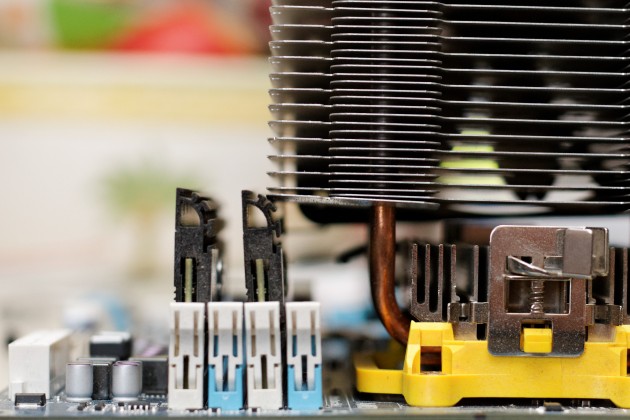

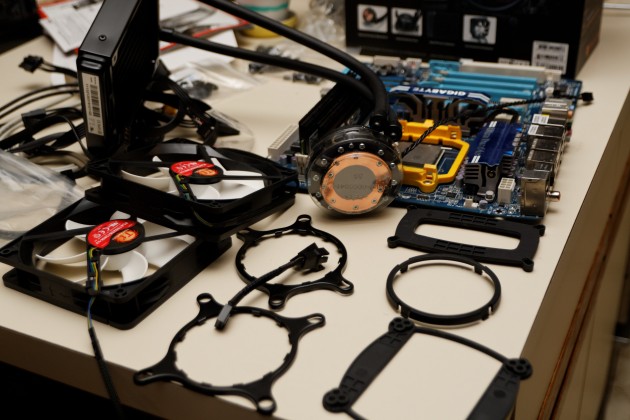
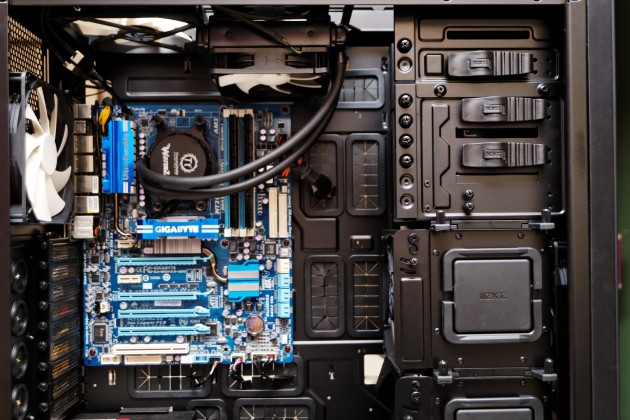
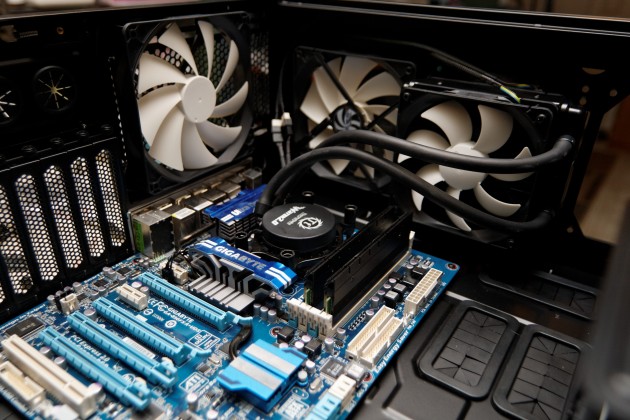
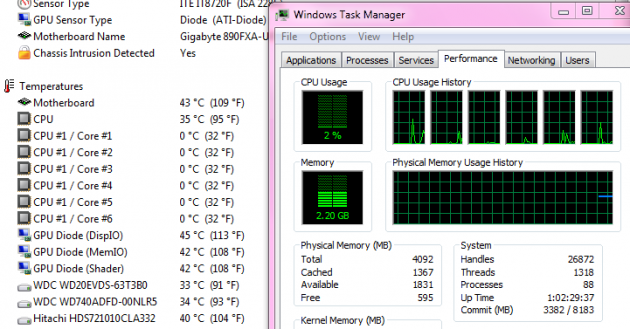
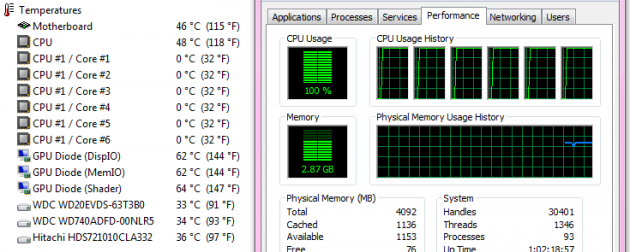








 Articles RSS
Articles RSS